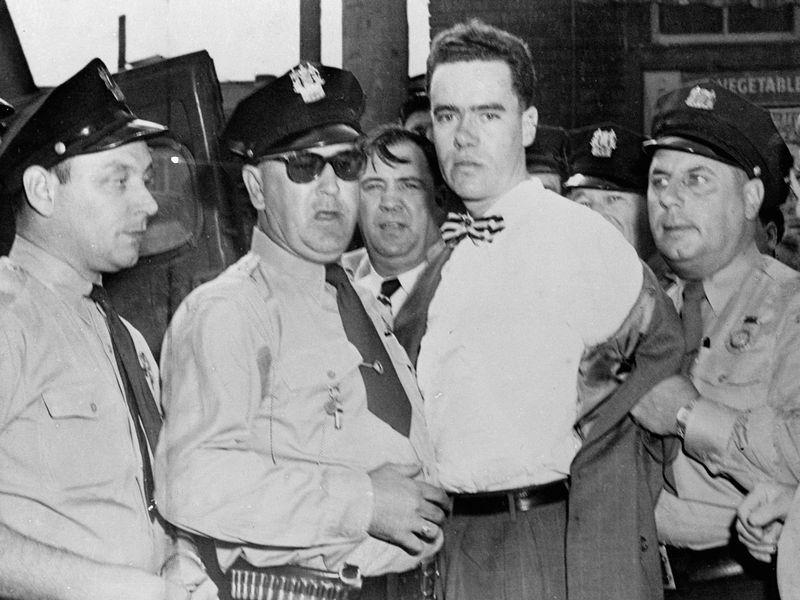
On September 6, 1949, Howard Unruh murdered 13 people in downtown Philadelphia. It's considered the first mass shooting in US history. Tragically, it wasn't the last. From a 2015 article about Unruh in Smithsonian:
In a few hours, on the morning of Tuesday, September 6, Unruh would embark upon his “Walk of Death,” murdering 13 people and wounding three others in a 20-minute rampage before being hauled off by police after a dangerous firefight. A somewhat forgotten man outside of criminology circles and local old-timers, Unruh was an early chapter in the tragically-all-too-familiar American story of an angry man with a gun, inflicting carnage...
“There have been notorious killers since America was founded, but you didn’t have the mass shooting phenomenon before Unruh’s time because people didn’t have access to semi-automatic weaponry,” says Harold Schechter, a true crime novelist who has written about infamous murderers going back to the 19th-century.
While the terminology is a bit fungible, Unruh is generally regarded as the first of the “lone wolf” type of modern mass murderers, the template for the school and workplace shooters who have dominated the coverage of the more than 1,000 victims since 2013. Unruh was a distinctive personality type, one that has also come to define those who have followed in his bloody footsteps.
“Unruh really matches the mass murder profile. He had a rigid temperament, an inability to accept frustration or people not treating him as well as he wanted, and a feeling of isolation, all things people accept and move on from,” says Katherine Ramsland, a professor of forensic psychology and the director of the master of arts in criminal justice at DeSales University, as well as the author of some 60 nonfiction books including Inside the Mind of Mass Murderers: Why They Kill. “He had a free-floating anger, held grudges, owned weapons he knew how to use, and decided somebody was going to pay. It’s a typical recipe for internal combustion.”